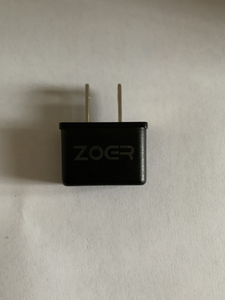I realize most people with 10th-grade physics would be able to answer this, but it's not quite as evident to me as it should be. A British company makes an Electric Kettle that operates on 240 VAC (50 Hz.) They also make a North American version of the same kettle that runs on 120 VAC.
The EU version is 2400 watts. The NA version is 1200 watts. They discontinued the NA version. If I bought the EU version and ran it on 120 VAC, would I get roughly half (1200 watts) or one quarter (600 watts?) Two electrical engineers told me the different values. Assuming they use the same element (and the resistance is consistent) and P = I * V, why do both of these guys seem so adamant they are each correct? Am I missing something in basic electrical theory? If the resistance is constant, 120 volts will only push half the current through it, so is it as simple as 120 * 5 = 600?
All this because my wife loves the design! I will end up buying a 120 --> 240 converter and running it off a 20-25 amp circuit at this rate!
@ve1dx
Let's call use the subscript e for european voltage a for the american values
So Ve = 2*Va
Resistance is constant (assuming a pure resistive heating element) then
Ie = Ve/R = 2*Va/R = 2*Ia
so Ve*Ie = (2*Va)*(2*Ia) = 4*Va*Ia.
That is Pe = 4*Pa
So Pa = Pe/4.
Does that work for you ? Does it tell you which engineer to fire ?
Anything seems possible when you don't know what you're talking about.
The P = I * V one gets his walking papers! I knew there was more to this. No idea if the element is the same resistance. I think I'll give up on the idea unless one of you gurus can think of a simple way to make this work in North America:
< https://uk.russellhobbs.com/retro-red-kettle-21670>
My "go-to" solution is to get a different brand that is designed for 120 VAC.
The NA version of the Russell Hobbs one (model KE5550RDR) has literally disappeared from any vendor selling in a country using 120 VAC. They still sell the 240 VAC version in the UK and EU (model 2160.) They seem to be sold out in the "home office" listed in the link above, but there are a number of UE and UK resellers who have them . . . except they ain't 120 VAC!
- Paul VE1DX
Otherwise, I can build a Rube Goldberg machine. Rheostat to play with the 120 V in to lower it to 80-90 volts. Then feed that into the 120 --> 240 converter and get around 180-200 volts out. Drive EU kettle with that to get around 1500 watts and not pull any more than 15 amps out of the 120-volt line . . .
Maybe I need to stick to Arduinos and Raspberry Pi systems. 😀
- Paul VE1DX
@ve1dx
Let's call use the subscript e for european voltage a for the american values
So Ve = 2*Va
Resistance is constant (assuming a pure resistive heating element) then
Ie = Ve/R = 2*Va/R = 2*Ia
so Ve*Ie = (2*Va)*(2*Ia) = 4*Va*Ia.
That is Pe = 4*Pa
So Pa = Pe/4.
Does that work for you ? Does it tell you which engineer to fire ?
Thank you for the correct way to look at this.
Being a stubborn fellow, I didn't give up. The EU and NA models of the electric kettle I was determined to replace were discontinued, but I found a NOS one in Germany. Unfortunately, I couldn't measure the element's resistance without disassembling it to bypass the control circuitry, so I went with a $5 adaptor to plug it into my 120 VAC.
Your math is bang on (as I expected.) Here's what I measured:
The North American version (hooked directly to the element because the auto-shutoff control circuitry was shot) draws 11.3 amps at 118 VAC, and my power meter indicates 1300 watts. It takes 10 minutes to boil 1.7 litres of tap water (about 12-15 C.)
The European version draws 4.7 amps at 118 VAC, and my power meter indicates 560 watts. This takes 20 minutes to boil 1.7 litres of water.
For us, this is actually BETTER than the NA version. Why? Because I typically use it in the morning with a toaster, espresso machine and microwave on the same kitchen circuit. If we're not careful, we can pop a breaker because the kettle uses ~11 of the available 15 amps. Dropping this to around 5 amps at the expense of an extra 10 minutes is no problem. Also, we would typically not completely fill it. They use roughly the same energy, but the EU version delivers it at 1/4th of the power. I'd have expected it to take 4 times as long to boil, but I am happy with it taking twice as long.
My conclusion: One side of my brain is wired like Rube Goldberg's was, and the other side is like William of Ockham. Ockham (more commonly called Occam's razor) won.
- Paul VE1DX
That's the plan, @will . . . the engineer I fired was my son, BTW. He went off and switched to applied math and hence his electrical engineering is rusty. Off to do something useful. Thanks again!
- Paul VE1DX

